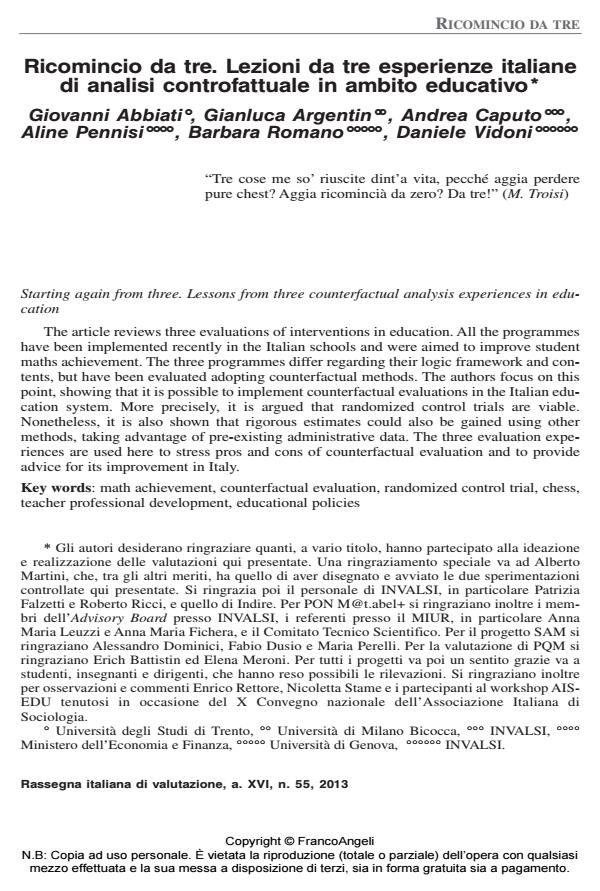Starting again from three. Lessons from three counterfactual analysis experiences in education
Journal title RIV Rassegna Italiana di Valutazione
Author/s Giovanni Abbiati, Gianluca Argentin, Andrea Capurto, Aline Pennisi, Barbara Romano, Daniele Vidoni
Publishing Year 2014 Issue 2013/55
Language Italian Pages 26 P. 21-46 File size 702 KB
DOI 10.3280/RIV2013-055003
DOI is like a bar code for intellectual property: to have more infomation
click here
Below, you can see the article first page
If you want to buy this article in PDF format, you can do it, following the instructions to buy download credits

FrancoAngeli is member of Publishers International Linking Association, Inc (PILA), a not-for-profit association which run the CrossRef service enabling links to and from online scholarly content.
The article reviews three evaluations of interventions in education. All the programmes have been implemented recently in the Italian schools and were aimed to improve student maths achievement. The three programmes differ regarding their logic framework and contents, but have been evaluated adopting counterfactual methods. The authors focus on this point, showing that it is possible to implement counterfactual evaluations in the Italian education system. More precisely, it is argued that randomized control trials are viable. Nonetheless, it is also shown that rigorous estimates could also be gained using other methods, taking advantage of pre-existing administrative data. The three evaluation experiences are used here to stress pros and cons of counterfactual evaluation and to provide advice for its improvement in Italy.
Keywords: Math achievement, counterfactual evaluation, randomized control trial, chess, teacher professional development, educational policies
Giovanni Abbiati, Gianluca Argentin, Andrea Capurto, Aline Pennisi, Barbara Romano, Daniele Vidoni, Ricomincio da tre. Lezioni da tre esperienze italiane di analisi controfattuale in ambito educativo in "RIV Rassegna Italiana di Valutazione" 55/2013, pp 21-46, DOI: 10.3280/RIV2013-055003